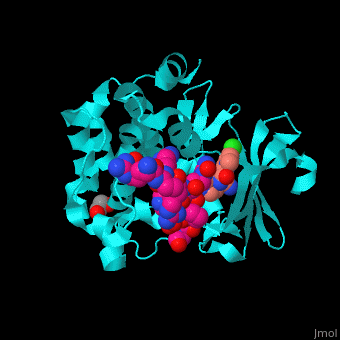Function
Proto-oncogene serine/threonine-protein kinase (Pim1) is the provirus integration site for Moloney murine leukemia virus 1[1]. Pim1 is involved in cell cycle progression, apoptosis, transcriptional activation and signaling pathways. Pim1 phosphorylates and inhibits proapoptotic proteins. For details see Student Project 6 for UMass Chemistry 423 Spring 2015. See also Oncogenes & Tumor Suppressor Genes.
- Chk1 or checkpoint kinase 1 phosphorylates variety of proteins resulting in activation of DNA damage checkpoint and more[2].
- Chk2 or checkpoint kinase 2 has a role in cell cycle arrest and apoptosis by DNA damage [3].
- Plk1 or Polo-like kinase 1 phosphorylates variety of proteins affecting cell entry into mitosis, centrosome maturation, spindle assembly and cytokinesis[4].
- Plk3 or Polo-like kinase 3 becomes phosphorylated after DNA damage or mitotic spindle disruption [5].
- Haspin phosphorylates histone H3 and thus affects mitosis [6].
- mTOR or mechanistic target of rapamycin signaling influences longevity and aging [7].
- LRRK1, LRRK2 or leucine-rich repeat kinase phosphorylate Rab proteins [8].
- RIP regulates apoptosis[9].
Relevance
Pim1 is a progression marker in diffuse large B-cell lymphoma[10].
Disease
Pim-1 plays a pivotal role in several tumor relevant signaling pathways and is relevant to colon carcinoma[11].
Structural highlights
Pim1 is phosphorylated on serine 261 (PSer). The [12]. Water molecules are shown as red spheres.
pim-1 3D structures
Serine/threonine protein kinase 3D structures

